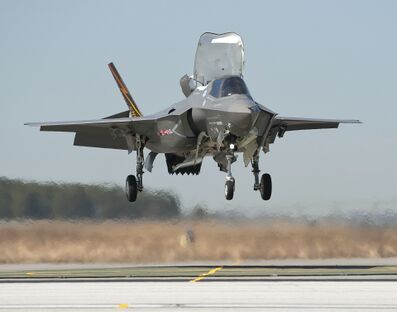Hovering


Hovering refers to a maneuver where the helicopter maintains a constant position, usually a few feet above the ground, by balancing lift and weight.
Definition[edit | edit source]
Hovering is a maneuver where a helicopter remains in nearly motionless flight over a reference point, maintaining a constant altitude and heading.
Lift and Weight Balance[edit | edit source]
The main rotor must generate enough lift to counteract the helicopter’s total weight.
Rotor Blade Pitch[edit | edit source]
The angle of attack (pitch) of the rotor blades is adjusted to control the amount of lift generated, allowing the helicopter to hover.
Vertical Flight[edit | edit source]
Hovering is an element of vertical flight, where the helicopter can move up or down by adjusting the balance of forces.
Control Inputs[edit | edit source]
Pilots use the cyclic (to control lateral and longitudinal movements) and the collective (to control altitude) to maintain a stable hover.
Practice and Skill[edit | edit source]
Hovering requires practice and a delicate touch on the controls, with pilots learning to anticipate control inputs and maintain stability.
Visual References[edit | edit source]
Visual references on the ground, such as markers or landmarks, can help pilots maintain orientation and position while hovering.
Wind Conditions[edit | edit source]
Wind conditions can affect hovering, requiring pilots to make adjustments to maintain a stable hover.
Tail Rotor[edit | edit source]
The tail rotor helps to counteract the torque of the main rotor, allowing the helicopter to turn and maintain directional control during a hover.
Loss of Tail Rotor Effectiveness (LTE)[edit | edit source]
Pilots need to be aware of LTE regions, which can occur when operating out of ground effect (OGE) or near maximum torque available (MTA).
Types of Hovering Turns[edit | edit source]
Pilots can perform different types of hovering turns, such as turning about the tail or nose, to maintain clearance from obstacles.
VTOL Aircraft Hovering[edit | edit source]
Aircraft like the Lockheed Martin F-35B Lightning II and the Harrier jump jet use vertical takeoff and landing (VTOL) technology to hover.
F-35B Lightning II[edit | edit source]
- The F-35B has a vertical lifting fan that functions like a miniature helicopter, enabling vertical takeoff and landing.
- The LiftSystem is the only vertical lift tech developed for supersonic jets in production.
Harrier Jump Jet[edit | edit source]
- The Harrier uses a jet engine with thrust-vectoring nozzles that swivel downwards to generate lift and enable hovering.
VTOL Technology[edit | edit source]
- VTOL (Vertical Takeoff and Landing) aircraft, including tiltrotors like the V-22 Osprey and jets like the Harrier and F-35B, operate without runways.